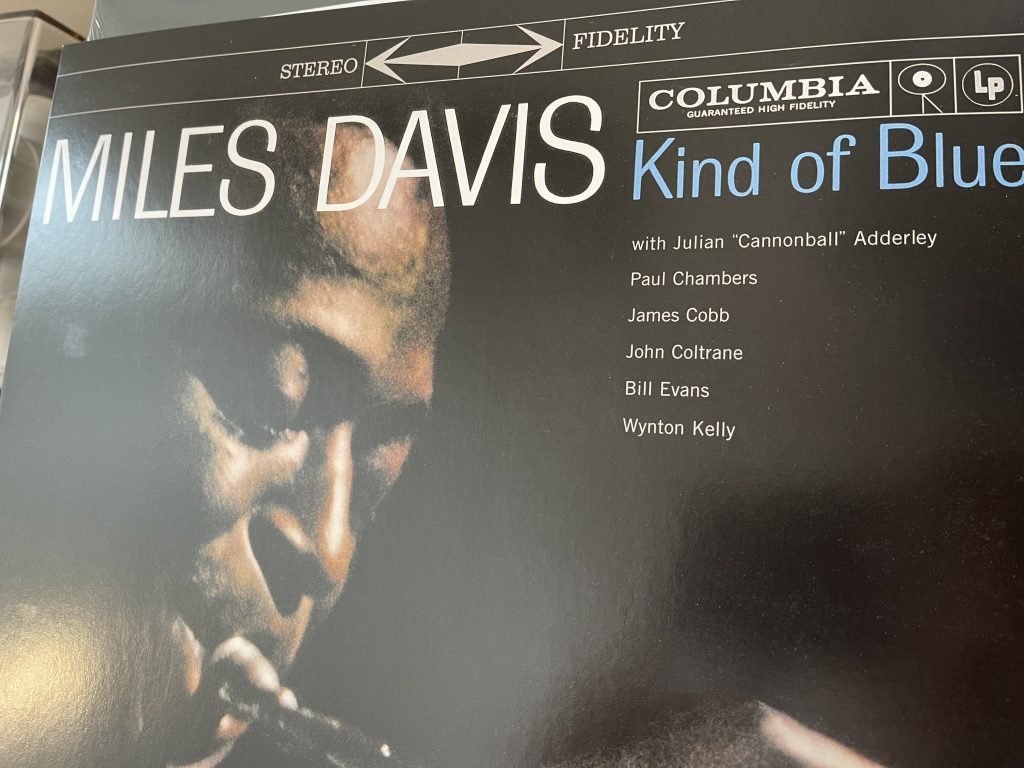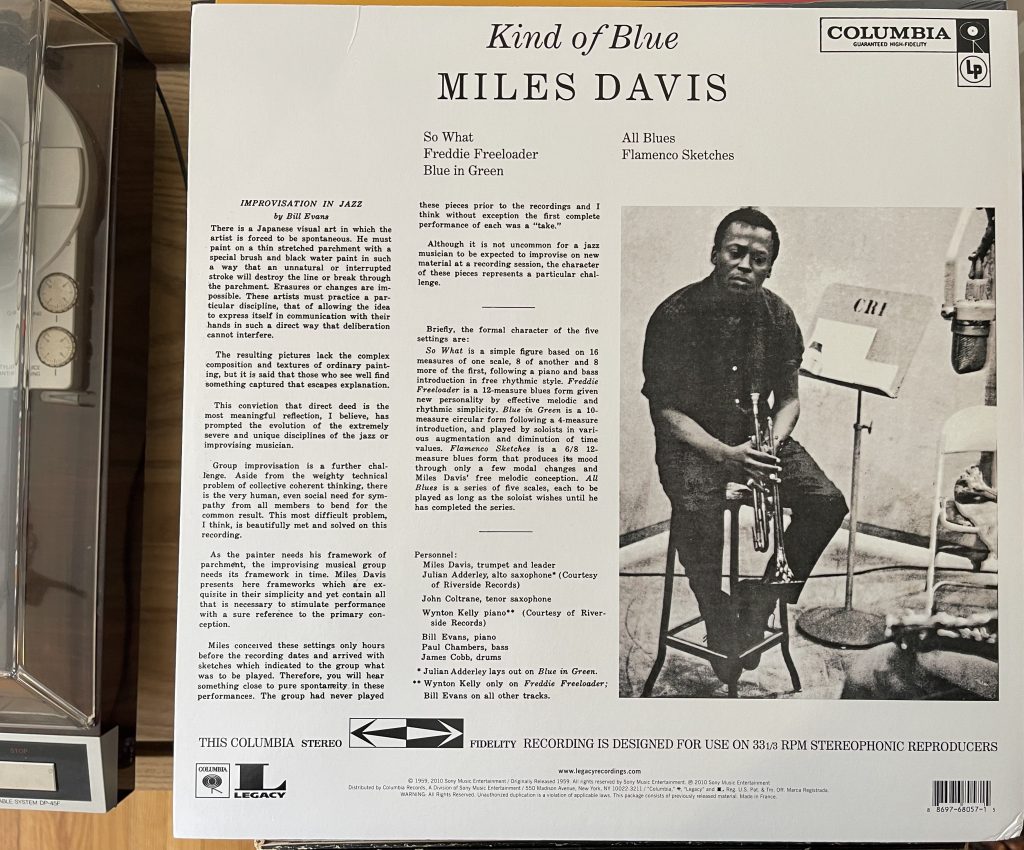
Album of the Week, April 16, 2022.
The opening of “So What,” the first track on Miles’ magnum opus, might be Paul Chambers’ most famous performance. Forget everything he had done with Miles’ group to this time; forget his solo records; forget all the great work he did with Trane and Cannonball Adderley and Kenny Clarke and Wynton Kelly and pretty much every hard bop artist in the 1950s and early 1960s. That walking bass line that follows Bill Evans’ introspective opening will forever define jazz bass: simple, functional (it underpins the modal progression of the that serves as the first line of the song’s theme), and utterly unforgettable. Chambers would live not quite ten more years after recording that bass line, and his work would never again have the sort of prominence he had on this record.
Kind of Blue was that kind of record for many of the players who performed on it. It’s that kind of record, period. It’s probably the one jazz record you have if you don’t own any jazz, because everyone has told you to buy it. And they’re right: Kind of Blue is the pinnacle of a certain type of playing, recorded by a group of men who had developed a certain telepathic sense of line and melody and how to step up and when to lay back.
For this reason, Kind of Blue repays countless listenings. It’s not as out there as some of the work that was to come with the Second Great Quintet, but it’s as intricate as a precision timepiece and as effortless as exhaling. So these thoughts are what I observe as I listen today. I might find different things tomorrow.
This was one of the few Miles albums that put the names of each player on the cover, even pianist Wynton Kelly, who only sat in on “Freddie Freeloader.” As we’ve learned in this series, the players matter in all these recordings, but they especially matter here. This is because, as Bill Evans notes in the liner notes to the album (below), almost everything you hear on the album was a first take.

That “almost” is interesting, because it raises the spectre of a self-conscious mythologizing—especially when one learns that there were, in fact, two takes of “Flamenco Sketches,” and that the one on the record is Take 2. There is also, in the liner notes, references to Japanese painting and a description of the different forms of each song, in an attempt to hint at the formal underpinnings beneath the improvisations. Evans notes of “All Blues,” for instance, that it is “a series of five scales, each to be played as long as the soloist wishes until he has completed the series,” which is a bit like saying Beethoven’s Ninth Symphony is a set of rhythmic vibrations of air.
Jibes aside, it is impossible to overstate Evans’ contributions to the album, and indeed to this phase of Davis’ band generally. As we learned while listening to Miles Ahead, Miles had been leaning toward a less cluttered conception of his music that offered more freedom for improvisation without the density of the chord changes that had been the formal underpinning of small group jazz since the days of Charlie Parker. Evans brought to his work on the piano a sense of formalism inspired by the works of Stravinsky and Darius Milhaud, as well as a formal grounding in the modal theories of George Russell courtesy of a working relationship with the noted “third stream” composer over the course of several years. The combination of Evans with Miles’ new modal direction, heard in their initial joint recordings as well as live performances in Davis’s sextet, was electric. But Evans was already looking beyond his sideman work and beginning to record with his first great trio with Scott Lafaro and Paul Motian. Miles had to ask Evans to come back and record this album with him.
It is clear that Kind of Blue would not have happened without Evans. First, on purely practical grounds, he by all accounts composed “Blue in Green,” based on a request by Miles to Evans for a piece that centered around two chords, G minor and A augmented. When he was not credited on the record, he confronted Miles, who is said to have offered him $25 in compensation. Based on its similarity to Evans’ earlier composition “Peace Piece,” it’s likely that the pianist wrote “Flamenco Sketches” as well.
But the pianist contributed other elements to the record, most notably an abiding sense of melancholy, particularly in the two compositions mentioned above. But the genius of the album is that the melancholy is not a destination. The form of “Blue in Green” sees the pianist come full circle, repeating the opening figure as though returning again and again to a painful memory. But “Flamenco Sketches,” as it moves through the different scales, opens up that melancholy like a flower, moving beyond and through to a new horizon.
Adderley and Coltrane brought their own strengths to the record. Cannonball brings his own sense of harmonic conception, but his rhythmic approach is more linear than Trane’s, who bent the meter when it suited him. Indeed, his entrance on “Freddie Freeloader” literally stops the time, as the entire band drops out behind his first entrance. Throughout, though, both saxophonists bring an almost psychic connection with each other and the rest of the band, contributing to the frequent description of these tracks as perfect improvisation.
Evans would not record with Miles again. Nor would Adderley, who moved on to form his own group. Trane returned for a few tracks of Miles’ next small-group album, but his swan song with the group was effectively the tour of Europe that they mounted in 1960. We’ll hear that soon.
Listen (again).

7 thoughts on “Miles Davis, Kind of Blue”